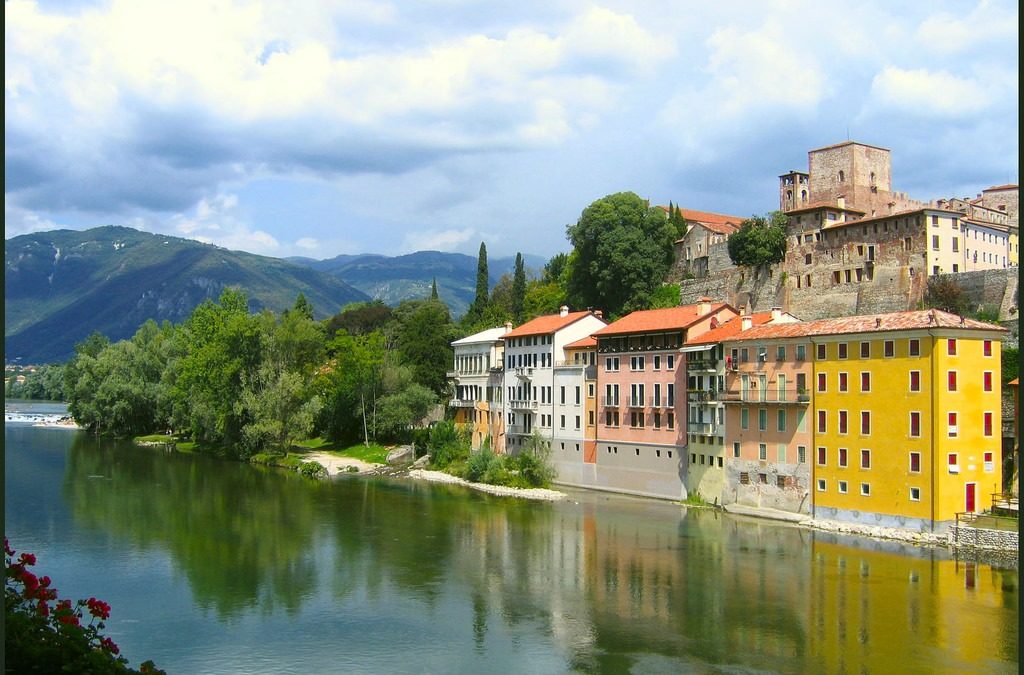History of Bassano del Grappa
Bassano del Grappa is one of the most populated cities in Veneto, which every year attracts hundreds of visitors for its artistic beauties and for its food and wine traditions.
Born on the banks of the Brenta, it has had several historical vicissitudes: first the domination of Padua, Verona and Vicenza and later that of the Visconti, from which it gained independence in the fourteenth century. Following the Treaty of Campoformio of 1797 it passed under Austrian rule until 1866 when the peace of Vienna sanctioned its belonging to Italy.
The First World War caused many losses for the city, while during the Second Bassano was an active center of the Resistance and the scene of the massacre of the partisans.
Rich in history and traditions, Bassano is today one of the most important and famous centers of the Vicenza province. Here is our tour in the city of grappa and alpine troopers!
The architectural beauties of Bassano del Grappa
Have you ever taken a ride in Bassano? I bet you have! The oldest part of the city is characterized by narrow alleys, traditional taverns and delicious bars from which the most common customs and habits of the city seep.
Among the most important attractions of the city there is the famous Wooden Bridge, also known as Alpine Bridge, built in the ‘200 but rebuilt in the ‘500 by Andrea Palladio following a flood of the river Brenta that overwhelmed the existing bridge.
A structure that has undergone events of all kinds! It was built in wood by the city council in order to recall the original structure, blown up during the Second World War and then rebuilt by the Alpines. But the vicissitudes continue today: due to the action of the water that continues to wet it, the Alpine Bridge is increasingly sinking. If you take a walk around Bassano, it is also visible to the naked eye.
Entering the city center there are many externally frescoed palaces that have attracted our attention: Palazzo Sturm, initially home to the textile industry, today a museum; Palazzo Bonaguro, known for its sixteenth-century garden; Palazzo del Monte di Pietà, in the central square of Monte Vecchio; the Dal Corno Bonato house, with the façade frescoed by Jacopo Da Ponte.
Churches do not lack in the architectural heritage. Among the most famous are the neoclassical church of San Giovanni dating back to 1300, and the church of San Francesco, in Romanesque-Gothic style, built around 1183 and rich in fifteenth-century frescoes.
The traditions of Bassano del Grappa
In addition to being a beautiful city to see, Bassano is also a city famous for its food and wine traditions. Mostly for the famous grappa, to which the Poli Grappa Museum is dedicated inside the ancient Palazzo delle Teste, just in front of the Old Bridge. Near Old Bridge stands among other things the oldest distillery of Italy, founded by Bortolo Nardini in 1779.
Bassano is however known for another delicacy of the Italian territory: the white asparagus, with its characteristic bitter taste that is usually accompanied with risotto or with eggs. There is even a competition exhibition dedicated to asparagus, to taste it in all its forms and versions!
If you are in Bassano you cannot miss the famous “cicchetti” that from six pm are offered in all the bars of the center to accompany the Spritz. But if you’re tired of the usual Spritz, the Nardini distillery offers the traditional “half and a half”, composed half of Nardini aperitif and half rhubarb Nardini.
In short, in Bassano there really is something for everyone. We advise you to get lost in the streets, forget the map and dedicate yourself to grappa!




